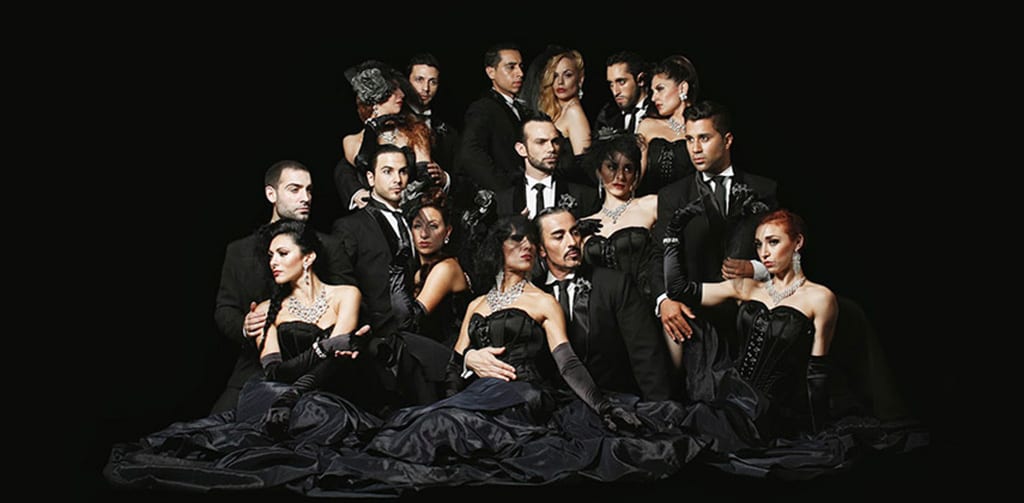Immortal Tango is a superlative evening at the theatre that transcends the traditional boundaries of dance spectaculars to become a truly total work of art. Just as detective fiction is often unfairly judged a minor art in comparison with other literary art forms, so tango shows are often evaluated more for technical merit than artistic accomplishment, almost as a professional version of Strictly. However, this generous, multi-faceted evening, with over a dozen musical items in each half, demonstrates just how much further the most skilled practitioners can develop their art. What we have here in fact is a series of highly detailed poetic stories, told through dance, voice and band, and operating at the most sophisticated level.
This production is the creation of German Cornejo and his dance partner Gisela Galeassi, who also developed Tango Fire, which had such a successful run a few years back. In broad terms the format is similar – six couples in addition to the two choreographers, a five-piece live band and a singer steeped in Latin style. The running order is varied – concerted items for whole company, a spot-lit focus on one couple, solo interludes from instrumentalists and singer, and other combinations including a thrilling number for two men alone. However, the emotional and narrative range of the show goes far beyond its predecessor. While there are several high-energy and ballroom sequences of cumulative acrobatic virtuosity there are also several comic and more dreamy, poetic tableaus which address a different emotional palette altogether, tapping into the interludes of grave restraint and pools of brooding melancholy that are also elements of the tango ethos.
There are two particular reasons for the outstanding success of the evening. Firstly, the technical level of the performers is without peer. There are five tango world champions among the dancers and the players and singer, Antonela Cirillo, have years of experience behind them both in Argentina and on tour. This means that everyone is sufficiently steeped in the tango groove, its formality, rigour and discipline, to then have the freedom and confidence to experiment and introduce elements of ballet and acrobatics into the shapes and style, and waltz, rock and jive inflections into the music. Tango started as music of the backstreets, not the ballroom, and the freedom of invention on offer here was an appropriate nod to its origins.
Secondly, the choreographers have combined a sense of the big picture – how make use of the large stage space of the Peacock Theatre so that there is always a sense of an evolving tableau, while still maintaining a resolute focus on the ‘purity of the couple’. Tango is not merely or even mainly a matter of steps or syncopated rhythms but an attitude of fierce sensual engagement between the two entwined members of a couple. This has to be felt as much as seen. It was hugely impressive that as you allowed your eye to wander from one couple to the next that dark, inward focus was there and finding its external expression. There was major assistance here from sumptuous costumes, expressionist lighting, and a sequence of curtains, both diaphanous and ruched, all redolent of the Hollywood glamour of the 1930s and 40s. Much of the music came from the same era, with a clever mix of adaptations from recent film music known to us all and Latin standards from the earliest days of the movies.
I had doubts about the adaptations of Adele’s Skyfall and a Latin version of ‘Don’t cry for me Argentina’, where the tango interpretation broke up the lines of the song too much; but in every other respect this show is sheer joy and perfection.

